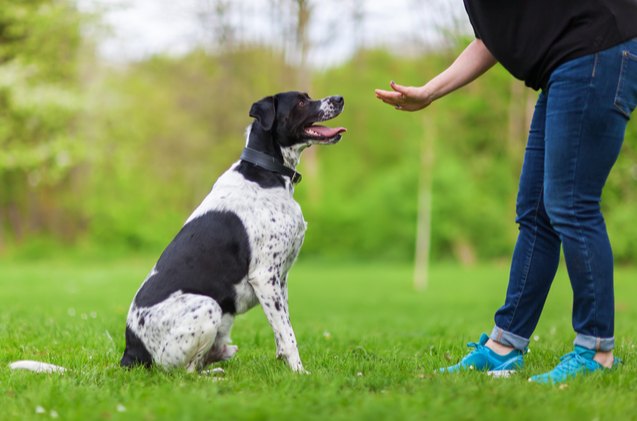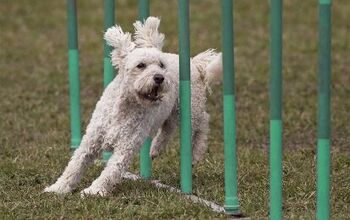Best Dog Training Books

Dog training books can offer invaluable insight into the expertise and experience of various professional trainers and dog behaviorist experts. With a range of specialized dog training books out there, you can easily find a perfect match for your dog’s behavioral issues or advice on the basics of bringing up a puppy.
While it would be dreamy if it could be possible, you can’t expect your pet to behave, have good manners, and respond to your commands if you haven’t trained them to any of these things. Some pooches are more inclined to learning new things, others can be stubborn or slow to catch on, some dogs have behavioral problems from day one and others act like the four-legged little angels they are: it doesn’t change a thing as in any situation, you will have to provide basic training and socialization to your dog. This will ensure that no matter their character and history, they will blossom into well-balanced, obedient, happy pooch. Many pet parents opt for using the services of professional dog trainers, but if you want to further reinforce the bond between you and your pet (and save quite a few $$$ in the process), then doing it yourself is the way to go.
Dog training books can be of immense help to pet owners trying to teach their dogs basic manners, tricks, or even deal with specific behavioral problems such as separation anxiety or resource guarding. There are tons of books out there, however, and it can be difficult pinpointing which author will actually give you what you need- after all, who has time to skim through dozens of books to find the right info to help them potty train their puppy? To help you find the methods, approach, and information you need to successfully train your dog, we’ve rounded up the best dog training books on the market. Happy reading!
1. Editor’s Choice
Written by a professional dog trainer for more than 20 years with furry clients such as Barack Obama’s dog and senator Kennedy’s three pooches, this comprehensive dog training guide offers a treasure trove of no-fail techniques. Based on positive reinforcement methods, this book will help you teach manners with love and kindness, and make the training process enjoyable for your dog and you both. The program is divided into 5 weeks and promises results with as little as 10 to 20 minutes of practice a day. It is also illustrated with photos and covers a range of topics from basic commands to potty and crate training all the way to water inhibition.
2. Runner Up
This dynamic YouTube star and Animal Planet personality offers a fresh approach to training dogs- one that is perfectly tailored to the unique needs and energy levels of your pet. Thanks to this, the results are fast and dogs are much happier with the process! In addition to basic training and house training, the author offers invaluable insight into solving behavioral issues, such as leash pulling, barking, or aggression, and covers teaching cool tricks for fun as well. On top of that, there’s plenty of useful information on healthcare such as help with choosing the right food for your pet.
Pros
- All-encompassing guide on raising a puppy
- Topics match YouTube videos so you can see advice in action
- Easy to read style
Cons
- More suited to first-time owners
3. Customer’s Choice: How to Raise the Perfect Dog: Through Puppyhood and Beyond by Cesar Millan and Melissa Jo Peltier
A star of National Geographic Channel’s Dog Whisperer and a bestselling author, Cesar Millan is a well-known name in the world of dog training- and here he shares all the tips and tricks you’ll need to raise a perfect pooch. Aimed at puppies and adolescents, this book will help you train your pooch and prevent behavioral problems before they even occur. Detailed and written in a friendly tone, this book includes a variety of topics from what to expect from each stage of your puppy’s development, ensuring obedience through boundaries and calm assertiveness, to avoiding the most common mistakes owners make raising puppies.
Pros
- Plenty of tips on welcoming a puppy to your home
- All-encompassing topics
- Aimed at young dogs and puppies
Cons
- Written more in the form of stories rather than itemized instructions
- Not explanatory enough for first-time owners
4. Best for Children
Who better to teach your child how to care for their new best friend than the director of a dog-training program for kids? This book is perfect for kids who want to learn how to train and care for their pets as it includes all the essential dog training lessons and tutorials in simple steps and easy-to-follow instructions appropriate for their young age. From basic training and commands to teaching tricks and playing games, this book will make the responsibilities that come with owning a pet look fun to your kids!
Pros
- Easy to understand
- Well-organized information
- Fun and light while still educational
Cons
- Not really for kids under the age of 7
5. Best for Tricks
So your pet has already gone through basic training- that doesn’t mean that the fun of learning has to stop! This fully illustrated guide uncovers the secrets of professional dog trainers and covers everything from simple commands such as roll over to complex acrobatics with frisbees. With 118 tricks and stunts to go through, your pooch will definitely not get bored with his training routine. A challenging but fun book, this training guide will enrich your relationship with your pet and make sure your four-legged bestie is ready to impress at the doggie park.
Pros
- 118 tricks and stunts illustrated with photos
- Clearly written instructions
- Step-by-step explanations
Cons
- More suited to small and medium dogs
- Can be too complicated for some
6. Best for Beginners: Dog Training For Dummies by Wendy Volhard and Mary Ann Rombold-Zeigenfuse
No experience with dogs? No worries- with this book, you can navigate through basic obedience training with ease and raise a well-behaved, happy dog. With methods developed for dogs in different life stages, you’ll have no problem adapting your training techniques to a puppy, adult, or even a senior dog. Based on positive reinforcement, this beginner-friendly dog training book will explain how to teach basic commands, eliminate unwanted behaviors, and build trust and communication with your pet.
Pros
- Step-by-step instructions
- Detailed with plenty of tips
- Perfect for first-timers
Cons
- Too much information to go through
7. Best for Puppies: The Puppy Primer by Patricia B. McConnell, Ph.D. and Brenda Scidmore
The best time to start training your dog is when they are still a puppy, and this is the go-to book for raising young pooches into balanced, well-mannered adults. Written by a certified applied animal behaviorist with over twenty years of experience and a professional dog trainer, this book is often recommended by experts to new puppy owners- and with good reason. Covering everything from socialization, house training, crate, and leash training, correcting unwanted behaviors, teaching tips and tricks, and more, this book contains anything you might need to make sure your puppy gets the best care and training possible.
Pros
- Detailed instructions
- Covers a wide range of topics
- Suited for beginners and pros alike
Cons
- Information dense
- Repetitive
8. Best for Aggressive Dogs
No one wants to talk about dog aggression- but it too, like many other behavioral issues, can be remedied with the right approach. Written by a professional force-free dog trainer that specializes in canine behavior, this book will show you how to correct your dog’s unpredictable and inappropriate behavior with positive, force-free training methods. With stories and practical examples, you’ll learn how to recognize warning signs, differentiate types of dog aggression, and handle aggressive behavior when it occurs.
Pros
- Great for reactive dogs
- Tons of practical and useful information
- Clearly written
Cons
- Not enough step-by-step instructions
9. Best for Separation Anxiety: Separation Anxiety in Dogs: Next Generation Treatment Protocols and Practices by Malena DeMartini-Price
Separation anxiety is a common behavioral issue that can become so severe it endangers your dog. For over twenty years, the author of the book focused exclusively on separation anxiety through her training programs and has a wealth of experience and knowledge to share in order to help you deal with your pet’s issues. From no absence management to improved desensitization techniques, you will come to realize that separation anxiety is fixable and your pooch can be trained to feel better and have a better quality of life even if you are not always around.
Pros
- Practical, effective advice
- Game-changing strategies for separation anxiety
Cons
- Better suited for trainers and experienced owners
- Beginners might need additional information on training to make these methods effective
10. Best for Service Dogs: Service Dog Training Guide: A Step-by-Step Training Program for You and Your Dog by Jennifer Hack
Service dogs can make a huge difference for people with disabilities- but how do you train a dog to take on that role? A professional dog trainer and dog behavior specialist explains, in detail, which types of service dogs there are, how to teach basic exercises to essential service dog tasks that will suit your individual needs, all broken down into clear and complete step-by-step instructions accompanied by troubleshooting tips. Based on positive reinforcement, these training methods will help your four-legged bestie learn everything they need to become a service dog- and enjoy the process to boot.
Pros
- Easy to follow and understand
- Suitable even for beginners
- Clear step-by-step instructions
Cons
- Not all service type dogs are covered- e.g. medical alert dogs
- No illustrations or photos
When to Start Training Your Dog
Despite the old saying – you can’t teach an old dog new tricks- it’s never too late to start training your pooch. However, most people start training their puppies as soon as they join the family, which is usually around two months of age, but as dogs this young still lack focus and concentration to go through more complex training, this is the age when you should teach only the basics, such as command sit, stay, or drop it, as well as leash training. In the following weeks, when your pooch is between 8 and 16 weeks old, you can start with the more “serious” stuff such as crate training and potty training. Be sure to be consistent and use positive reinforcement methods to get the best results. At the age of 6 months, your puppy should have some basic training and socialization, which will create a good foundation for further honing their skills and teaching new tricks and manners.
While starting training in puppyhood is the best option as it can be easier for dogs to get into the routine from the get-go, that doesn’t mean you can teach an adult rescued dog where to go potty or how to come on command if they have been previously taught. It might require a bit more patience and time, but with a positive attitude and a lot of treats- anything is possible!
We are committed to finding, researching, and recommending the best products. We earn commissions from purchases you make using the retail links in our product reviews. Learn more about how this works.

A proud mama to seven dogs and ten cats, Angela spends her days writing for her fellow pet parents and pampering her furballs, all of whom are rescues. When she's not gushing over her adorable cats or playing with her dogs, she can be found curled up with a good fantasy book.
More by Angela Vuckovic

































